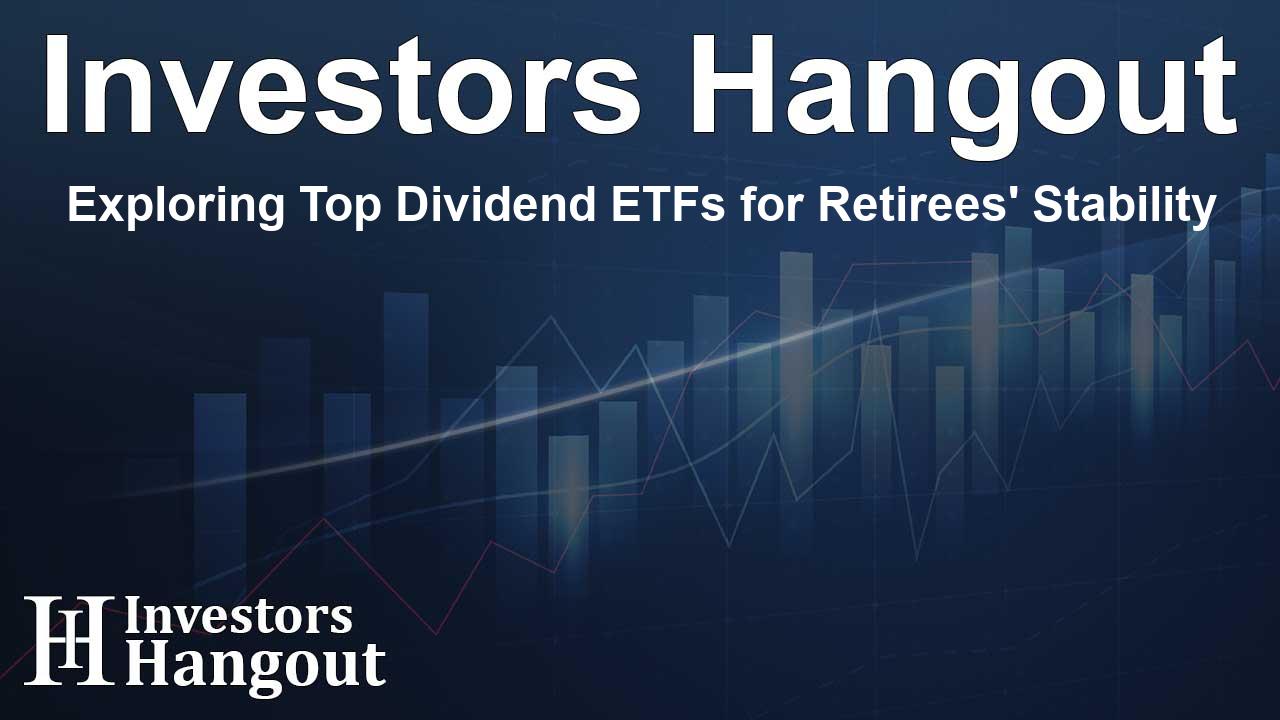Exploring Top Dividend ETFs for Retirees' Stability

Understanding Dividend ETFs for Retirement
For retirees, choosing the right dividend stocks can often lead to what many describe as 'paralysis analysis.' This dilemma arises due to the overwhelming number of options: over 5,000 stocks that share dividends trade on U.S. exchanges alone. However, there's a practical solution available – investing in exchange-traded funds (ETFs) that provide attractive dividend yields. Below, we explore three outstanding dividend ETFs that are favored by retirees.
1. iShares Select Dividend ETF
Offered by BlackRock, the iShares Select Dividend ETF stands out as a strong contender for anyone looking to invest in dividend-paying stocks. Launched in November 2003, this ETF currently manages nearly $19.8 billion in assets. Its primary goal is to track the performance of the Dow Jones U.S. Select Dividend Index, which highlights U.S. companies with a robust track record of dividend payments.
ETF Holdings and Performance
The iShares Select Dividend ETF comprises 98 stocks, with top holdings that include prominent companies such as Altria Group, AT&T, and Philip Morris International. The fund has a commendable 30-day Securities and Exchange Commission (SEC) yield of 3.69% and an impressive average annual total return of 8.1% since its inception. However, potential investors should consider its annual expense ratio of 0.38%, which is slightly on the higher side compared to other ETFs in the same category.
2. SPDR S&P Dividend ETF
Another noteworthy option is the SPDR S&P Dividend ETF, managed by State Street. First trading in November 2005, it boasts over $21.2 billion in assets. This ETF aims to replicate the performance of the S&P High Yield Dividend Aristocrats index, which consists of companies that have consistently raised their dividend payouts for at least 20 consecutive years.
Composition and Yield
The SPDR S&P Dividend ETF currently holds 133 stocks, featuring notable names like Realty Income and International Business Machines. Approximately 65% of its portfolio is made up of stocks from sectors such as consumer staples, industrials, and utilities. Its 30-day SEC yield comes in at 2.29%, and it offers an impressive average annual total return of 9.14% since its launch. Importantly, its expense ratio stands at 0.35%, making it a slightly more economical option compared to the iShares ETF.
3. Vanguard High Dividend Yield ETF
The Vanguard High Dividend Yield ETF is a leading choice for dividend-focused investors. Launched in November 2006, it has quickly ascended to become the largest ETF on this list, with total net assets reaching $70 billion. This fund aims to track the performance of the FTSE High Dividend Yield Index, targeting stocks that offer above-average dividend yields and potential for earnings growth.
Key Features and Competitive Advantage
This ETF holds 551 stocks, showcasing companies like ExxonMobil and Johnson & Johnson among its top assets. While the specific 30-day SEC yield isn't disclosed, the fund currently features a dividend yield of 2.8%. Impressively, it has achieved an average annual total return of 8.68% since inception. The standout feature of the Vanguard High Dividend Yield ETF is its remarkably low annual expense ratio of just 0.06%, making it an attractive option for cost-conscious investors.
Final Thoughts on Investing in Dividend ETFs
When considering investments, especially in funds like the Vanguard High Dividend Yield ETF, it's important to weigh your options carefully. Investors should evaluate their financial goals and analyze the long-term potential of these ETFs.
Frequently Asked Questions
What are dividend ETFs?
Dividend ETFs are exchange-traded funds that invest primarily in stocks known for paying dividends, providing investors with income and potential for capital appreciation.
Why are dividend ETFs ideal for retirees?
Dividend ETFs can offer retirees a stable income stream while also allowing for potential growth, making them suitable for those looking to supplement their fixed incomes.
How do dividend ETF yields compare to stocks?
Dividend ETF yields are generally comparable to individual high-dividend stocks, but they provide diversification benefits by spreading risk across multiple holdings.
Can I hold multiple dividend ETFs in my portfolio?
Yes, diversifying by holding multiple dividend ETFs can help balance risk and provides exposure to different sectors and companies.
Are there risks associated with investing in dividend ETFs?
Like all investments, dividend ETFs are subject to market risks, and dividend payments are not guaranteed. It's important to research and understand the underlying holdings.
About The Author
Contact Logan Wright privately here. Or send an email with ATTN: Logan Wright as the subject to contact@investorshangout.com.
About Investors Hangout
Investors Hangout is a leading online stock forum for financial discussion and learning, offering a wide range of free tools and resources. It draws in traders of all levels, who exchange market knowledge, investigate trading tactics, and keep an eye on industry developments in real time. Featuring financial articles, stock message boards, quotes, charts, company profiles, and live news updates. Through cooperative learning and a wealth of informational resources, it helps users from novices creating their first portfolios to experts honing their techniques. Join Investors Hangout today: https://investorshangout.com/
The content of this article is based on factual, publicly available information and does not represent legal, financial, or investment advice. Investors Hangout does not offer financial advice, and the author is not a licensed financial advisor. Consult a qualified advisor before making any financial or investment decisions based on this article. This article should not be considered advice to purchase, sell, or hold any securities or other investments. If any of the material provided here is inaccurate, please contact us for corrections.
